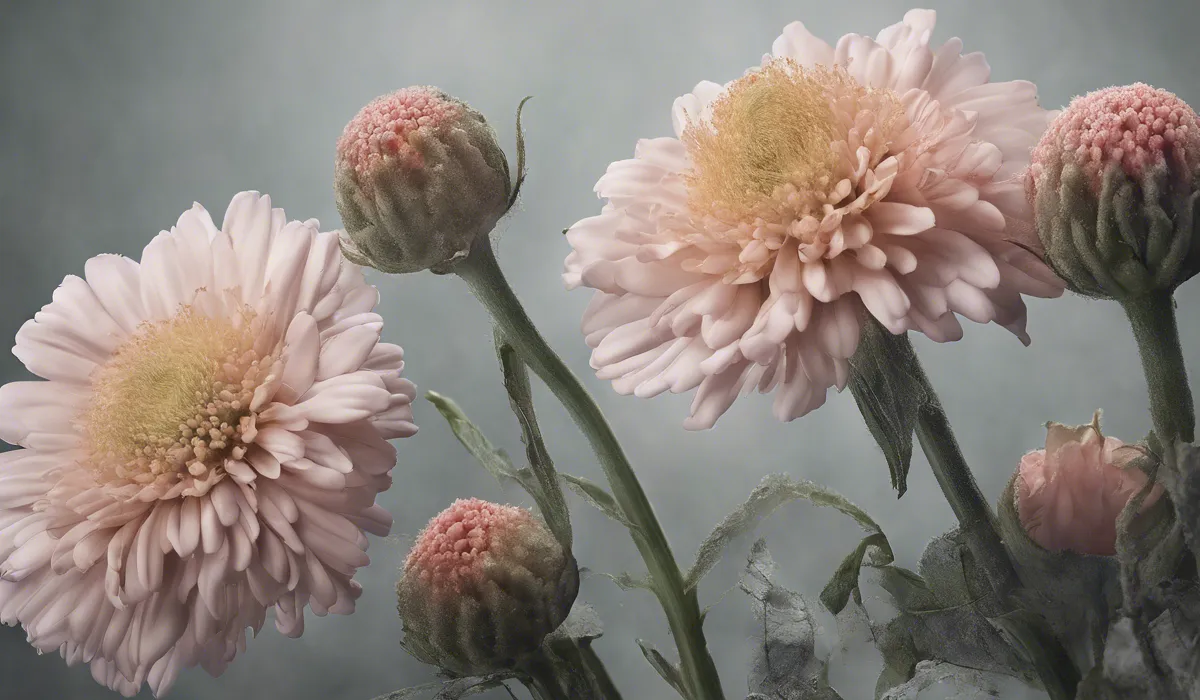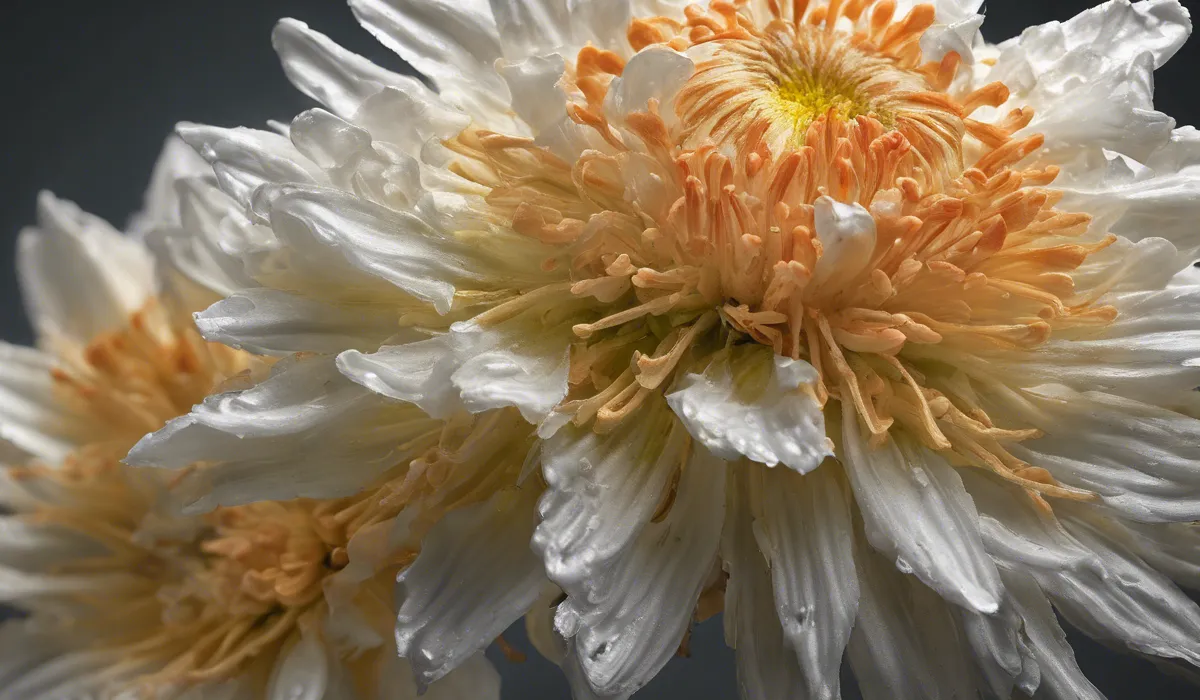Flowers mold due to excess moisture and poor air circulation, which create ideal conditions for fungal growth. Mold spores thrive on organic material in damp environments. Ensuring dry, well-ventilated conditions can prevent molding in flowers.
Causes of Flower Mold

Presence of Fungal Spores
Fungal spores are like tiny seeds that float through the air, land on surfaces, and wait for the perfect moment to grow.
They are everywhere, outside in the garden, and even inside our homes. These spores are not harmful by themselves, but when they land on a damp flower, they can start to grow and turn into mold.
When flowers have too much water on their petals or leaves, or if they are in a place that is too warm, spores get excited.
They wake up from their sleep and start to grow into mold because the conditions are just right. It’s like they have found a cozy, wet bed to grow in.
Environmental Conditions Conducive to Mold Growth
Flowers like to be in places that are not too wet or too dry, and they need fresh air to stay healthy. When the air is still and full of water, like in a bathroom after a hot shower, it is easy for mold to grow.
Flowers can get moldy if they are kept in places that are too warm, like near a heater or in a sunny window during the summer.
If flowers are too close together, they can’t breathe well, and the air around them gets stuck.
This makes it easy for mold to grow. It’s like when people are standing too close in a crowded room, and it gets hot and stuffy.
Poor Flower Maintenance
Just like people need to take showers and wear clean clothes, flowers need to be taken care of to stay healthy.
If someone gives them too much water, it’s like sitting in a wet bathing suit all day, which can make the skin itchy and uncomfortable. Flowers feel the same way when they have wet feet all the time.
Using dirty tools or pots to take care of flowers is like eating with dirty forks and plates. It can make the flowers sick.
If dead leaves or petals are not cleaned up, it’s like leaving garbage around, and mold loves to grow on this kind of mess. Flowers need clean places to live and grow, just like people do.
Effects of Mold on Flowers

Impact on Aesthetic Value
Mold makes flowers look ugly, with spots and fuzz that are not pretty to look at. For people who sell flowers, like in a flower shop, this can mean they lose money because no one wants to buy moldy flowers.
Flowers are meant to be beautiful and make people happy. When they have mold on them, they do not look or smell nice, and it can make people feel sad instead of happy.
Health of the Plant
Mold on flowers is like a sickness that can hurt the leaves and petals. It can stop the flower from making food with sunlight, which is called photosynthesis.
If one flower gets sick, it can spread to others nearby, just like when one person catches a cold and then others get sick too.
Risks to Human Health
Some people can get sneezy or have a hard time breathing if they are around moldy flowers. It’s important to be careful and clean up any mold on flowers so it doesn’t make people sick.
Prevention and Treatment of Flower Mold

Cultural Practices
Keeping flowers healthy means giving them just the right amount of water, not too much. They need to be in a place where the air can move around them and keep them dry.
Cleaning the tools and places where flowers live is like washing hands before eating; it helps keep the flowers from getting sick.
Chemical and Biological Control Methods
Sometimes, special medicines called fungicides can be used to help flowers with mold. But it’s important to use them carefully and only when needed. There are also good bugs and tiny living things that can help fight off the mold without hurting the flowers.
Monitoring and Early Detection
It’s important to look at flowers often to catch any mold before it grows too much. If someone sees mold starting, they can take steps to clean it up quickly and stop it from spreading to other flowers.
FAQs About Why Flowers Mold
What causes mold to grow on flowers?
FAQ Answer: Mold grows on flowers due to excess moisture and poor air circulation, providing ideal conditions for fungal growth.
Can mold on flowers spread to other plants?
FAQ Answer: Yes, mold spores can spread to other plants, particularly in damp, poorly ventilated environments.
How can I prevent my flowers from molding?
FAQ Answer: Prevent molding by keeping flowers dry and ensuring they are in a well-ventilated area to discourage fungal growth.
Is mold on flowers harmful to humans?
FAQ Answer: Some molds can cause allergic reactions or other health issues in humans, so it is best to avoid contact with moldy flowers.
What should I do if my flowers start to mold?
FAQ Answer: Remove the moldy parts of the flowers, reduce moisture levels, improve air circulation, and isolate the affected flowers to prevent the spread of mold.
Final Thoughts
Flowers mold due to the combination of excess moisture and inadequate air circulation, which fosters the growth of mold spores.
These spores proliferate on the organic matter of flowers in moist conditions. To prevent mold on flowers, it is crucial to maintain a dry environment with good airflow.
